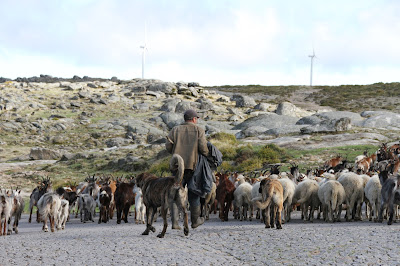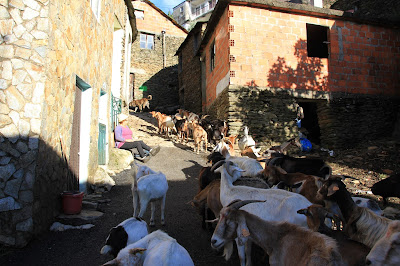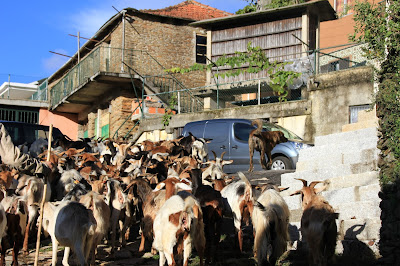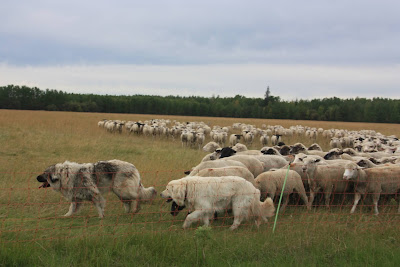Attitudes toward LGD
©Louise Liebenberg (2021)
Written for The Shepherds Magazine
It is interesting to see how attitudes vary regarding using livestock guardian
dogs (LGD) to protect livestock against predators. For me, it was simple, I am
passionate about my ranch and all the animals on it, I appreciate all the
wildlife we have, and I like dogs, so I saw the use of LGDs as a benefit, and
positive addition to the ranch. However, not everyone shares this view, it is
interesting to look at these attitudes and what affects them.
In countries where the use of LGD is still a strong tradition, the attitude toward LGD is positive and there is high acceptance of them by local people. These shepherds understand that LGD and sheep belong together, in many instances the shepherds are proud and positive about their LGD. In many of these countries it is tradition celebrate the use of LGD. In Turkey, a Sivas Kangal festival is held to honour these dogs. In Macedonia, tribute is paid to the Sarplaninac dog by having an image of the dog on a coin and in some countries, where the dogs protect the sheep from wolves, the dogs are adjourned with flowers and paraded through the local villages.
 |
In regions where the wolf has long been extirpated and now
making a comeback, the attitudes are less positive. Many ranchers and shepherds
I have spoken to, feel that using LGD has been forced upon them due to wolf
reintroductions or through “rewilding” programs. They view the use of LGD as
tedious requiring additional management practices and a higher cost on their
livestock operations. Some shepherds feel that by using LGD, implies acceptance
of wolf reintroduction, a “giving in” to government pressure. Some people question
why do they need to invest in LGD, and their training, to keep the livestock
safe when the government is initiating this reintroduction? Not using LGD, it is a form of resistance to these
Government programs, rather than an actual negative attitude toward LGD. Some shepherds feel they can “show” how disastrous
wolf reintroduction is, by having higher losses from predators by not taking
measures to protect their flocks. It can
be used as a lobbying point for higher compensation payouts, both for livestock
deaths, as well as the additional costs of using LGD. Many of these ranchers and shepherds feel that
using LGD sends a message of compliance to the reintroduction or protection of
wolves and other predator species.
 |
There is no historical tradition for using LGD in the United
Kingdom (UK), yet they do have a long history for breeding very talented
herding dogs. The border collie is the main “sheepdog” in the UK. There is no
tradition to using LGD and many shepherds find the concept of having a very
large dog living in among the sheep alarming.
In the UK, most shepherds have a very negative attitude about (pet) dogs
in amongst their sheep due to them chasing and worrying them. The shepherds in
the UK understand that border collies (or other herding dogs) cannot just be
left unattended with sheep, as this can result in death and injury to them. As public
walking paths can, and do, criss-cross through farmers fields, a lot of sheep
deaths are caused by the general public’s dogs getting off leash and end up
chasing, harassing, and killing sheep. It is an offence to allow a dog to worry
sheep in the UK and has been drummed into the public’s head that dogs and sheep
do not go together free, in a pasture. I have spoken to many British sheep
farmers and the idea of a LGD living in with the sheep full time is concerning
for them. It would take a lot of education and perhaps many years to have any
kind of acceptance for LGD to be working with sheep flocks. A secondary issue
would be the potential for conflict between LGD and the public. As walkers do
have free access to farmers land, having a LGD free in with the livestock might
create issues with the LGD being aggressive towards walkers and their pets.
There is no culture in the UK for using LGD, so many shepherds generally have
an attitude that LGD cannot and will not work in their situation. A similar situation exists in Switzerland with
public access to walking trails and the potential for conflict between the
hikers and LGD. Signposts and videos on how to behave are being promoted by the
government to help educate the public.
When I lived in the Netherlands, we had our LGD in with the livestock to
primarily protect the sheep against people’s loose pet dogs. We lost over 24
adult sheep in one night, a pair of dogs got free and started “playing” with
the sheep. This prompted us to look at using LGD to provide protection for the
sheep. At that time, the largest wild predator in the Netherlands were foxes.
The biggest predator issue was caused by pet dogs. We were one of the first
shepherds to use LGD with our flocks. Getting our first LGD caused quite a
stir, as we left our LGD “unattended” in the pasture with the sheep. This was
regarded as a form of abandonment by the local authorities. No amount of
convincing on our part could persuade them that LGD and sheep need to live in
the same pasture. It ended up with us having to take the dog home at night, not
an ideal situation. Since those initial years, wolves have drifted back into
the Netherlands and some shepherds are now looking to using LGD to protect
their flocks from these wolves. Concerns around public opinions, barking and
potential aggressiveness will need to be addressed in the Netherlands before
LGD will truly be accepted as a tool to mitigate conflict between predators and
livestock.
The attitudes towards LGD varies among conservationists, some feel that having
large dogs in with the livestock will have a negative affect on non- predator
wildlife species, causing disruptions in their behaviour and potential
harassment of deer, elk, and other animals. Some conservationists feel that LGD affect the
natural behaviour of predators and that is unacceptable to them. Research has
shown that this is true, LGD do affect how predators behave and react around
flocks that are guarded by dogs. Other
people have voiced their concerns as to the claim that LGD are an effective “non-lethal”
mitigation tool to livestock and predator conflict, as a LGD will kill a coyote
or other small predators if they can catch them. Although it is not very common
that LGD kill predators, it certainly does happen, most times the dogs interfere
with hunting patterns and push predators further away from the flock without
the need to actively engage predators in a fight. The “non-lethal” only applies to the owner not
killing the predators, not the dogs! Many conservationists do however see that
using LGD is a way to directly reduce conflict between predators and livestock,
many are willing to assist in implementing the use of LGD within flocks. Some
groups go as far as providing LGD to shepherds, educational programs, and
support. In Canada in the province of Saskatchewan, sheep keepers can apply for
a grant to purchase a LGD puppy as the Government feels that using LGD is a
sound method to help prevent predation.
In many countries including Africa, USA and even traditional LGD regions, the
general satisfaction for using LGD is very high. Shepherds value having LGD in
their program and do see the benefit of reduced losses, access to grazing areas
that were potentially not useable due to predation and of course peace of
mind. The attitude toward LGD can
fluctuate due to external factors such as changing polices regarding wildlife,
livestock prices, fluctuations in markets and long term, sustained predation of
livestock. If the rancher cannot make a living with the livestock due to low
market pricing, every additional cost to the operation can be considered too
much. Investing in LGD, feeding and vet care are all additional expenses that
need to be carried by the livestock operation.
Attitudes towards LGD are also very dependant on the level of effort required
to get a sound and reliable dog. People who have had LGD that have pulled wool
and bitten the livestock, tend to be a little more negative about the use of
LGD. I have met people where the LGD has
caused the death of some of the livestock, and this has a dramatic effect on
the positivity towards the dog, and LGD in general. A lady I know, whose LGD
pulled wool and chewed some ears off the
lambs has decided not to use LGD, primarily due to the amount of work and the
risk it may pose to her livestock and has opted instead to implement other methods such as fox-lights,
electric fencing and night penning to protect her stock.
I believe the majority of ranchers, in a high predator areas, are positive
about using LGD. Many wildlife and conservation organizations also see the
benefit of finding ways to reduce conflict between predators and
livestock. The biggest challenge might
ultimately be convincing the public (who feel that all dogs should “fur-babies”)
that using LGD and other working dogs, is not abusive or neglectful.





No comments:
Post a Comment